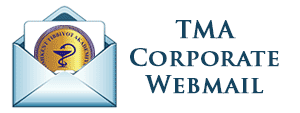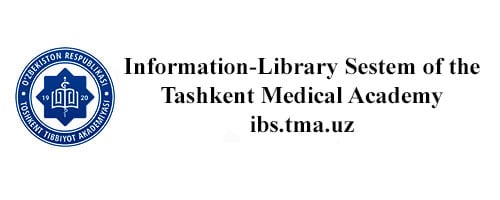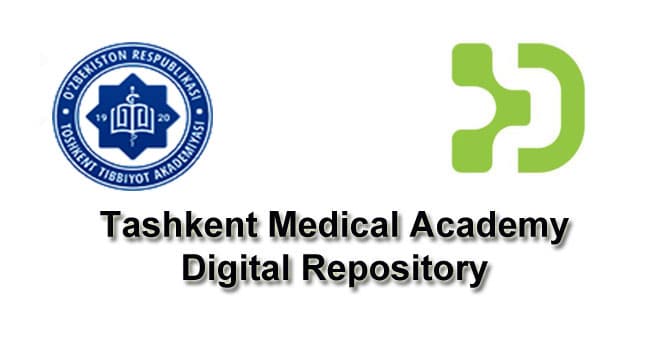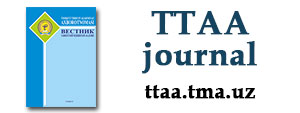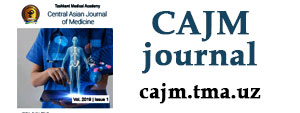General information
The Department of Angiography and Endovascular Surgery is a structural subdivision of the 2nd TMA Clinic and was formed in 1983 on the initiative and under the leadership of the head of the Department of Hospital Surgery of the II Faculty of Medicine, Sh.I. Karimov.
Magamadov U.A., Osipov N.G., as well as Akhtaev A.R., who later became its first head, were directly involved in its creation . Since 1997, the department has been headed by S.P. Borovsky .
The establishment of the department of angiography and endovascular surgery, the mastery and development of new technologies for endovascular treatment would be extremely difficult without the friendly assistance of leading foreign clinics, as well as without the intensive exchange of scientific and practical information between other medical institutions within the Republic on issues of planned and emergency endovascular surgery. We remember with gratitude the assistance provided in organizing the department to the employees of the NIISP named after. Sklifosovsky N.F. Professors Zingerman L.S. and Belozerov E.G., who stood at the origins of the development of this entire area of medicine.
The department immediately set a course for the introduction of minimally invasive technologies for the diagnosis and treatment of the most complex diseases of vascular, pulmonary, abdominal surgery and other pathologies. In a short time, thanks to the efforts of the staff of the department and department, modern angiographic methods were mastered, optimal conditions were created for providing routine, highly qualified diagnostic and therapeutic care using catheter methods to patients of surgical, urological, neurosurgical, hematological, orthopedic and oncological profiles.
Professor Zingerman L.S. helps Osipov N.G. in performing endovascular interventions for cardiac vascular pathology.
In addition to the planned work, emergency diagnostic and therapeutic care was organized using endovascular methods for urgent patients with a focus on emergency pathology of the abdominal and thoracic organs (gastrointestinal, esophageal, pulmonary bleeding, acute pancreatitis, peritonitis, diseases of the biliary system, etc.), vascular system ( acute thrombosis, embolism of peripheral and visceral vessels, injuries of the musculoskeletal system with damage to the great vessels).
The development of endovascular technologies occurred in parallel with the substantiation of optimal approaches and tactics for their use in combination with other treatment methods, which was carried out on the basis of in-depth research work with the active introduction of scientific achievements into the medical practice of the clinic.
Thus, already in the first years of the department’s formation, endovascular methods were introduced into the treatment of stenotic and occlusive lesions of the aorta and its branches.
Academician Pokrovsky A.V. in angiography
Akhtaev A.R. during an angiographic examination
Transluminal angioplasty of the great vessels in order to restore their patency in case of stenoses and occlusions began to be used not only as an independent intervention, but also against the background of long-term regional infusion therapy to improve tissue perfusion and consolidate the effect of endovascular dilatation, as well as in combination with simultaneous reconstructive operations on blood vessels lower extremities.
Improving the results and increasing the effectiveness of the introduced intra-arterial regional infusion of drugs for critical limb ischemia was achieved in the direction of abandoning standard schemes for selecting infusion media to a more differentiated use of drugs depending on the nature of the disease, the stage of the pathological process, using the latest discoveries in pathophysiology and advances in pharmacology, as well as combinations of this method with surgical interventions on the autonomic nervous system.
One of the priority areas of the department has become complex endovascular treatment of portal hypertension and its complications. The introduction of the developed method of chronic embolization of the splenic artery using conical spirals created the possibility of effective and relatively safe treatment of the phenomena of splenomegaly and hypersplenism , also achieving a decrease in pressure in the portal vein and improving arterial blood supply to the liver. The expanded use of the method, its improvement with the development of scientifically based tactics for subsequent use made it possible to completely abandon such organ-removing surgical intervention for this pathology as splenectomy . Active implementation of transhepatic embolization of varicose veins of the esophagus and stomach for portal hypertension, development of the technology for using this method have significantly improved the results of treatment of patients with esophageal bleeding, and significantly reduced the level of complications and mortality.
The emergence and further development of endovascular interventions in our clinic has significantly changed the tactics of treating massive pulmonary hemorrhages, the main approach in the treatment of which has long been considered surgical, in most cases disabling interventions. The development of indications, techniques for performing embolization of bronchial arteries, its scientifically based combination with bronchoscopic or surgical operations not only expanded the possibilities of medical care for this category of patients, but also radically changed the protocol for patient management and sharply increased the overall effectiveness of treatment measures.
The staff of the department, following modern trends in the progress of X-ray surgical methods in the treatment of pathology of the biliary system and cavitary formations of the liver, observed in the 90s, quickly mastered and made a significant contribution to their development. A number of new technologies for the use of transhepatic endobiliary interventions in the treatment of obstructive jaundice of both benign and malignant origin, including its complicated forms. Subsequently, along with the development of technical aspects of transhepatic interventions, in close collaboration with the department’s researchers, indications and tactics for the differentiated use of transhepatic interventions were developed. endobiliary methods of treatment for various pathologies of the biliary tract, their combined use with endoscopic, laparoscopic , open surgical interventions, external shock wave lithotripsy . Minimally invasive technologies for the treatment of choledocholithiasis , strictures of the bile ducts of inflammatory or tumor origin, destructive forms of acute obstructive cholecystitis with a significant risk of surgical intervention have received rapid development.
Based on the achievements of pathophysiology and modern understanding of the development of a number of acute diseases of the thoracic and abdominal organs, the staff of the department, together with employees of the department, substantiated the need and developed the most effective methods of intra-arterial regional drug therapy for diseases such as acute nonspecific suppurative lung diseases, peritonitis, pancreatitis, intestinal obstruction, diabetic angiopathy of the lower extremities, allowing for rapid improvement of microcirculation, neutralization of breakdown products, suppression of autolysis of the pancreas , prevention of the development of liver and multiple organ failure.
The emergence and development of angiographic methods in the clinic has opened up wide opportunities in the diagnosis and minimally invasive treatment of arterial hypertension. Thus, the introduction of transluminal angioplasty of the renal arteries, and since the mid-90s, X-ray endovascular occlusion of venous blood flow and destruction of the adrenal glands, have significantly increased the effectiveness of endovascular correction of arterial hypertension of vasorenal and adrenal origin. Over the course of several years of existence, the department and clinic have accumulated unique experience in minimally invasive treatment of various diseases of the adrenal glands, amounting to hundreds of clinical observations.
Since 1989, the department moved to the 8th floor of the 1st building. The development of new technologies for X-ray surgical treatment of various pathologies was facilitated by the replacement in 1995 of morally and physically outdated equipment with modern angiographic equipment (“MULTISTAR TOP+”), which made it possible to obtain images based on digital subtraction followed by computer processing, using small-diameter catheters and small doses of contrast agent, which significantly reduced trauma and increased the overall effectiveness of the interventions.
Thanks to strong connections with other foreign clinics, the department’s staff were trained in new endovascular methods at the Institute of Cardiology named after. Myasnikova A.A. (Russia) under the guidance of prof. Savchenko A.P., at the University of Illinois (Chicago, USA), in the Department of Interventional Radiology of Washington Hospital (USA), cardiological centers in Arsaw and Poznan (Poland).
. Borovsky S.P. on an internship in the department of angiography at the University of Illinois ( Chicago ) .
Thus, thanks to the personal participation of the head of the department of x-ray surgical methods of diagnosis and treatment of the Federal State Institution “Institute of Surgery named after. A.V. Vishnevsky Rosmedtekhnologii » prof. Kokova L.S. in recent years, the department has developed the latest technologies for stenting the renal, visceral and other branches of the aorta, and the assistance provided by the professor of the Russian State Medical University V.N. Shipovsky allowed the department staff to master and develop a new direction in endovascular surgery – implantation of vena cava filters for the purpose of prevention thromboembolic complications.
From 2009 to this day, the department is headed by Ph.D. Rakhmanov S.U. Under his strict leadership, strong connections were established with other foreign clinics, the department’s staff were trained in new endovascular methods at the Center for Neurosurgery of the Central Clinical Hospital JSC ( Kazakhstan ) under the leadership of Berdikhojaev Mynzhylky Sailauovic .
Therapeutic work
The Department of X-ray Endovascular Surgery performs high-tech diagnostic and therapeutic interventions, such as:
- Angiography of the aortic arch, carotid arteriography
- Angioplasty of the arteries of the leg (diabetic foot)
- Angioplasty, stenting of brachycephalic arteries
- Angioplasty, stenting of the iliac arteries and arteries of the lower extremities
- Aortoarteriography of the lower extremities
- Arteriography of the upper extremities
- Arteriography of the small pelvis with embolization of the uterine arteries
- Arteriography of the lower limb with catheterization for DVACT
- Renal arteriography, renal artery stenting
- Arteriography, splenic artery embolization, hepatic artery embolization, gastroepiploic artery embolization, left gastric artery
- Bronchial arteriography with embolization of bronchial arteries
- Abdominal aortography
- Dilatation of the terminal part of the common bile duct with the removal of stones into the intestine
- Cavography with angiopulmonography
- Vessel catheterization for intra-arterial therapy
- Catheter-aspiration thrombectomy and thrombolysis
- Contrasting and drainage of cavitary formations of the liver and abdominal cavity.
- Control cholangiography with drainage tube replacement
- Coronary angiography
- Coronary angiography with stenting of the coronary arteries
- Carotid arteriography with stenting of the carotid arteries
- Coronary angiography, carotid arteriography
- Coronary angiography, carotid arteriography, aortoarteriography of the lower extremities
- Coronary angiography, carotid arteriography, aortoarteriography of the lower extremities, renal arteriography
- Coronary angiography, renal arteriography
- Lower cavagraphy , installation of a cava filter
- Panortography
- Selective arteriography
- Common bile duct stenting
- Pelvic venography
- Translumbar aortoarteriography
- Transjugular portosystemic shunt
- Removal of a soft tissue foreign body
- Installation of a pacemaker
- Fistulography
- Phlebography of the adrenal gland
- Phlebography of the adrenal gland with electrocoagulation
- Phlebography of the adrenal gland with embolization and electrocoagulation
- Phlebography of the kidneys
- Phlebography, embolization of varicocele
- Chemoembolization of liver and pancreas tumors
- Celiacography, mesentericography with return portography
- Percutaneous-transhepatic portography , embolization of esophageal varices
- Percutaneous transhepatic cholangiography
- Percutaneous transhepatic cholangiography with cholangiostomy
- Common bile duct endoprosthetics
- Removing the vena cava filter
- Vertebral arteriography with stenting of the vertebral arteries
- Phlebography with angioplasty and stenting of the venous system
- Carotid arteriography with vascular embolization (AVM , CV) of the brain
- Arteriography of the lower extremities with vascular embolization (AVS)
- Installation of a pacemaker
- Angioplasty of the arteries of the leg (diabetic foot)
- An operation involving an anesthesiologist
- Hybrid operations on the lower extremities
- Angioplasty of brachycephalic arteries
- Angioplasty and stenting of the iliac arteries and lower limb arteries
- Carotid arteriography with stenting of the carotid arteries
- Angioplasty of the arteries of the leg (diabetic foot)
- Carotid arteriography with stenting of the carotid arteries
- Carotid arteriography with vascular embolization (AVM , CV) of the brain
- Pelvic arteriography, embolization of prostate arteries
- Arteriography of the small pelvis with embolization of the uterine arteries
- Transjugular portosystemic shunt
- Contrasting and drainage of cavitary formations of the liver and abdominal cavity.
- Contrasting and drainage of echinococcal liver cyst
Specialist
Rakhmanov Sobir Urinbaevich – head of the department, candidate of medical sciences, surgeon of the highest category, interventional surgeon. Work experience: more than 25 years
Khasanov Valizhon Rakhmatullaevich – Candidate of Medical Sciences, surgeon of the highest category, interventional surgeon. Work experience: more than 15 years
Rahimzoda Tohir Erkini – surgeon, interventional surgeon. Work experience: 4 years














